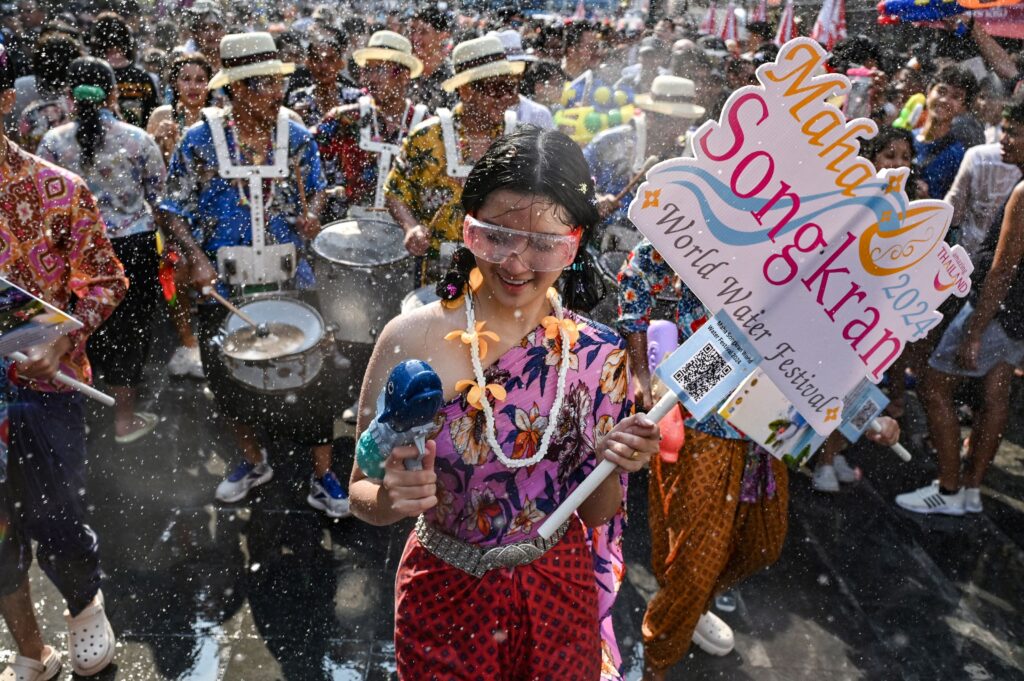The turning of a new year is celebrated across cultures in various ways, often tied to astronomical events that mark the rhythm of our seasons. While many Western countries observe New Year on January 1, several Asian nations celebrate their traditional New Year in April, during a festival known as Songkran. This timing aligns with the sun’s entry into Aries according to sidereal astronomical calculations, creating a fascinating connection between celestial movements and cultural traditions.

The Astronomical Foundation of Songkran
Songkran’s timing revolves around the sun’s position in the zodiac. While the Western Gregorian calendar marks the beginning of spring (and traditionally the new year) when the sun enters Aries in the tropical zodiac around March 21, Songkran follows the sidereal zodiac, which accounts for the precession of the equinoxes. This results in the celebration falling in mid-April, when the sun enters Aries according to sidereal calculations.
This astronomical alignment is no coincidence. Traditional calendars in Thailand, Myanmar, Cambodia, Laos, and parts of India were based on careful astronomical observations. The word “Songkran” itself derives from Sanskrit “saṃkrānti,” meaning “astrological passage,” specifically referring to the sun’s movement into the first house of the zodiac (Aries).
Origins and Cultural Significance
Songkran’s roots trace back to ancient Brahmanic traditions that spread throughout Southeast Asia, blending with local Buddhist practices. Historically, it served as the official calendar new year in Thailand until 1888, when the country adopted January 1 as its civil new year date. However, Songkran remains the traditional Thai New Year celebration and holds immense cultural importance.
In Thailand, Songkran is celebrated from April 13-15, though festivities can extend longer in some regions. The festival marks the end of the dry season and anticipates the coming monsoon rains – crucial for agricultural societies. This transition period was traditionally a time when farmers awaited rainfall before beginning new planting cycles, making it a natural point to mark a new annual cycle.
Rituals and Traditions
Songkran celebrations encompass several meaningful rituals:
Water Cleansing: The most visible aspect of Songkran is the water festival element, where people sprinkle or pour water on each other. This practice originated from ritual cleansing where scented water was poured over Buddha images and elders’ hands as a form of purification and blessing. The washing away of the old year’s misfortunes gradually evolved into today’s often exuberant water fights.
Temple Visits: Devotees visit Buddhist temples to make merit, offer food to monks, and participate in ceremonies. Many bring sand to temples to replace what they may have inadvertently carried away on their feet throughout the year – a symbolic act of restoration.
Honoring Ancestors and Elders: A key element of Songkran is paying respect to elders. Younger people perform the “Rod Nam Dam Hua” ceremony, pouring scented water over the hands of elders while asking for their blessings for the coming year.
House Cleaning: Homes are thoroughly cleaned before Songkran, symbolizing the removal of misfortune and making way for good luck in the new year.
Sacred Thread Rituals: In some regions, white strings are tied around wrists in blessing ceremonies called “Baci” or “Sai Sin,” believed to bind good fortune to the recipient.
Regional Variations
While Songkran shares common elements across Southeast Asia, each country and region celebrates with unique traditions:
Thailand: Known for elaborate water festivals throughout the country, with Chiang Mai hosting particularly famous celebrations lasting nearly a week.
Myanmar: Called “Thingyan,” featuring water festivals and the erection of a ceremonial post called a “Yama Zakta.”
Cambodia: Known as “Choul Chnam Thmey” (Enter New Year), featuring traditional games and temple rituals lasting three days.
Laos: Called “Pi Mai Lao,” celebrated for three days with water festivals, religious ceremonies, and traditional dance performances.
Parts of India: Several Indian states celebrate their new year around this time, particularly in areas following sidereal astronomical traditions.
The Living Tradition
Today, Songkran represents a fascinating blend of ancient astronomical knowledge, religious devotion, cultural heritage, and pure celebration. While modern celebrations often emphasize the festive water elements, the deeper significance of renewal, purification, respect, and astrological timing remains embedded in the tradition.
The festival demonstrates how ancient civilizations across Asia developed sophisticated calendrical systems based on celestial observations, recognizing the sun’s journey through the zodiac as a natural marker for yearly cycles. By maintaining these celebrations according to sidereal time rather than adopting the Western tropical calendar exclusively, these cultures preserve a direct connection to traditional astronomical knowledge that spans millennia.
As we witness these vibrant celebrations across Southeast Asia each April, we’re observing not just a cultural festival but the continuation of an ancient astronomical tradition – one that reminds us of humanity’s enduring connection to the rhythms of the stars and seasons.
Hey there! We hope you love our fitness programs and the products we recommend. Just so you know, Symku Blog is reader-supported. When you buy through links on our site, we may earn an affiliate commission at no extra cost to you. It helps us keep the lights on. Thanks.
Disclaimer: The information provided in this discussion is for general informational and educational purposes only. It is not intended as medical or professional advice. Only a qualified health professional can determine what practices are suitable for your individual needs and abilities.


